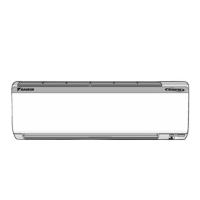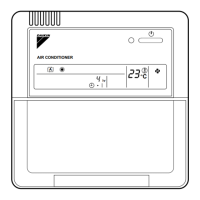Ventilation Clearance
Below are minimum ventilation clearance recommendations.
The system designer must consider each application and
provide adequate ventilation. If this is not done, the unit may
not perform properly.
Unit(s) Surrounded by a Screen or a Fence:
1. The bottom of the screen or fence should be at least 1 ft.
(305 mm) above the roof surface.
2. The distance between the unit and a screen or fence
should be as described in Figure 1.
3. The distance between any two units within a screen or
fence should be at least 120" (3048 mm).
Unit(s) Surrounded by Solid Walls:
1. If there are walls on one or two adjacent sides of the unit,
the walls may be any height. If there are walls on more
than two adjacent sides of the unit, the walls should not
be higher than the unit.
2. The distance between the unit and the wall should be at
least 96" (2438 mm) on all sides of the unit.
3. The distance between any two units within the walls
should be at least 120" (3048 mm).
Do not locate outside air intakes near sources of
contaminated air.
If the unit is installed where windy conditions are common,
install wind screens around the unit, maintaining the
clearances specied (see Figure 1). This is particularly
important to maintain adequate head pressure control when
mechanical cooling is required at low outdoor air temperatures.
NOTE: Low head pressure may lead to poor and erratic
refrigerant feed control at the thermostatic expansion
valve. The unit has automatic control of the
condenser fans which should provide adequate head
pressure control down to 20°F provided the unit is not
exposed to windy conditions. The system designer is
responsible for assuring the condensing section is not
exposed to excessive wind or air recirculation.
Overhead Clearance
1. Unit(s) surrounded by screens or solid walls must have
no overhead obstructions over any part of the unit.
2. The area above the condenser must be unobstructed in
all installations to allow vertical air discharge.
3. The following restrictions must be observed for overhead
obstructions above the air handler section:
a. There must be no overhead obstructions above the
furnace ue, or within 9" (229 mm) of the ue box.
b. Overhead obstructions must be no less than 96"
(2438 mm) above the top of the unit.
c. There must be no overhead obstructions in the
areas above the outside air and exhaust dampers
that are farther than 24" (610 mm) from the side of
the unit.
Roof Curb Assembly and
Installation
Locate the roof curb and unit on a portion of the roof that can
support the weight of the unit. The unit must be supported to
prevent bending or twisting of the machine.
If building construction allows sound and vibration into the
occupied space, locate the unit over a non-critical area. It is
the responsibility of the system designer to make adequate
provisions for noise and vibration in the occupied space.
WARNING
Mold can cause personal injury. Some materials such as
gypsum wall board can promote mold growth when damp.
Such materials must be protected from moisture that can
enter units during maintenance or normal operation.
Install the curb and unit level to allow the condensate drain to
ow properly and allow service access doors to open and close
without binding.
The gasketed top surface of the curb seals against the unit
when it is set on the curb. These anges must not support
the total weight of the duct work. See Installing Ductwork on
page 16 for details on duct connections. It is critical that
the condensate drain side of the unit be no higher than the
opposite side.
meChanICal InsTallaTIon
www.DaikinApplied.com 5 IM 1058-8 • MAVERICK II ROOFTOP SYSTEMS

